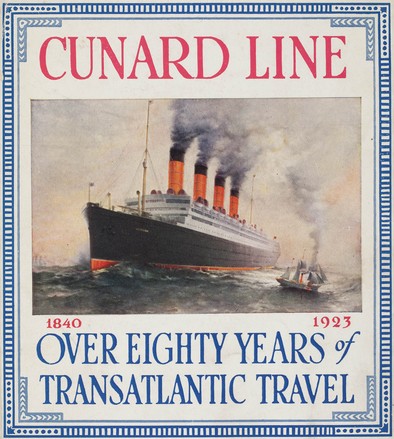
Over eighty years of trans-Atlantic travel: a pictorial history showing the progress of Cunard, 1922
Cunard
Steamship Co.
Printed
booklet
Bayldon/0202
The Cunard Line, one of the world’s greatest fleets of ocean going vessels, commemorates the 175th anniversary of its first trans-Atlantic crossing in July 2015.
The history of the Cunard fleet is the story of crossing the North Atlantic by sail, steam and diesel, in vessels made from wood, to iron and steel.
Nova Scotian Samuel Cunard was awarded the first British trans-Atlantic steamship mail contract in 1839. With famous Scottish steamship designer and builder, Robert Napier, the men launched four paddle steamers on the Liverpool-Halifax-Boston route. These first mail steamers evolved into the massive luxury liners, floating palaces and ocean-going holiday resorts of the modern tourist’s world. Cunard’s Laconia began its first around-the world cruise in January 1923, lasting 130 days and visiting 22 ports.


 Back to list
Back to list